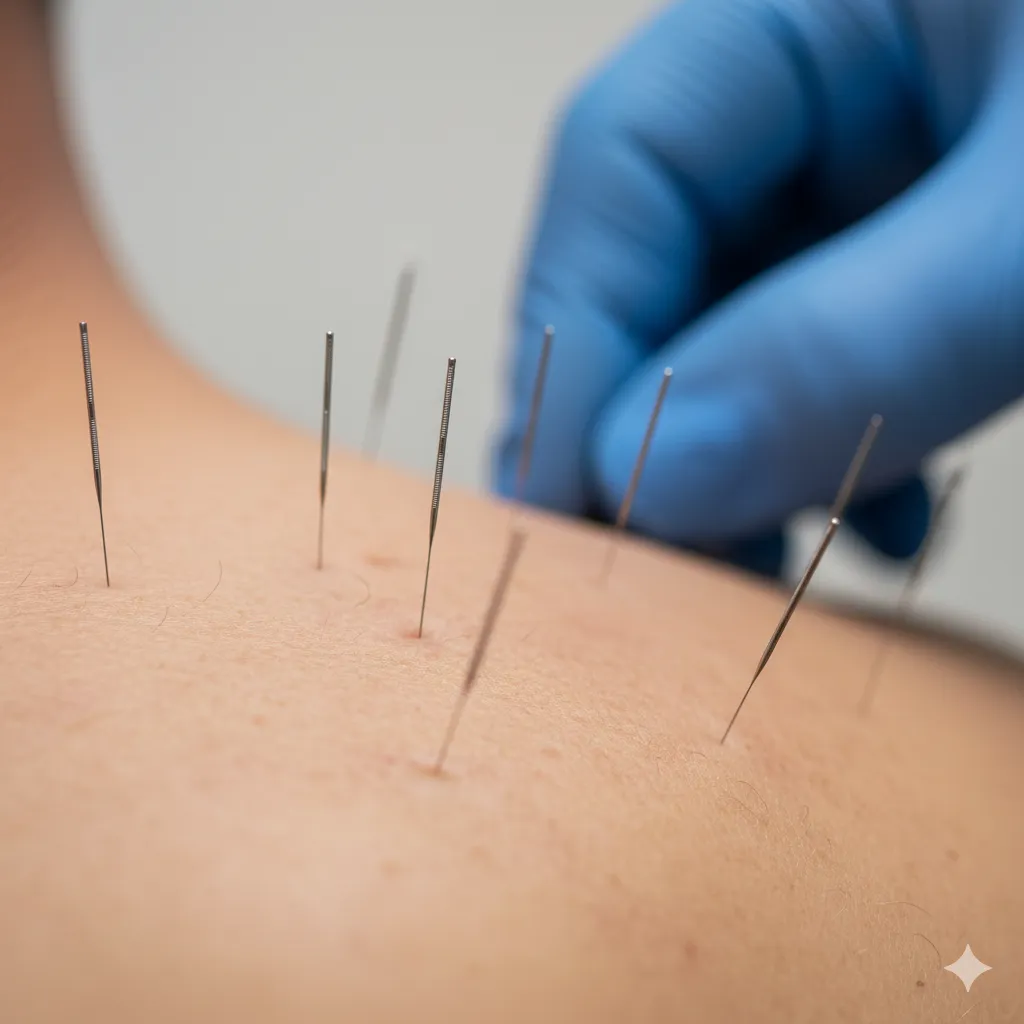
Unlocking Relief: How Dry Needling Transforms Pain Management in Physical Therapy
In today’s fast-paced world, chronic pain can feel like an unwelcome companion, overshadowing daily joy and productivity. Fortunately, physical therapy continues to evolve—and one technique is emerging as a game-changer: dry needling.
This modern, evidence-based intervention blends the science of neuromuscular physiology with precise needle techniques to unlock relief, restore mobility, and elevate overall quality of life.
If you've been searching for lasting pain relief, improved function, and a path back to an active lifestyle, dry needling may be the solution.
Below, we break down what it is, how it works, and why it’s transforming pain management today.
What Is Dry Needling?
A Modern Approach to Musculoskeletal Pain
Dry needling is a therapeutic technique performed by specially trained physical therapists to reduce musculoskeletal pain and dysfunction. It usesthin, sterile filiform needlesinserted into muscles to release tension, deactivate trigger points, and improve movement.
Unlike “wet needling,”no medication is injected—the needle alone produces the therapeutic effect.
A Brief History
First explored in the mid-20th century, clinicians discovered that inserting needles into muscle trigger points produced rapid pain reduction. Over time, dry needling evolved into a refined, research-backed treatment used widely in orthopedic and sports physical therapy.
A Neuromuscular Reset
Dry needling targets dysfunctional muscle and connective tissue, helping:
Reset abnormal motor endplate activity
Decrease inflammation
Improve circulation
Promote tissue repair
This makes it an excellent treatment for both acute injuries and chronic pain conditions.
The Science Behind Dry Needling
Trigger Point Deactivation
When a needle reaches a trigger point, it often elicits alocal twitch response (LTR)—a quick, involuntary muscle contraction. This response is clinically significant because it:
Breaks the pain-spasm-pain cycle
Reduces muscle tension
Improves muscle function
Neurological Effects
The needle stimulates sensory nerves that communicate with the spinal cord and brain, activating the body’snatural pain control systems. This leads to:
Release of endogenous opioids
Modulation of pain signals
Reduced central sensitization
Physiological Healing
The microtrauma created by the needle increases blood flow and triggers a mild inflammatory response, stimulating:
Growth factors
Tissue regeneration
Faster recovery
Dry needling works not only by relieving symptoms but also by addressing thesourceof pain.
Benefits of Dry Needling in Pain Management
1. Rapid Pain Relief
Many patients notice immediate improvements in pain and mobility following treatment.
2. Versatility Across Conditions
Dry needling is effective for:
Muscle tension
Tendonitis
Headaches/migraines
Joint dysfunction
Post-surgical recovery
3. Enhances Other Physical Therapy Interventions
When combined with exercise, manual therapy, and corrective movement training, dry needling accelerates progress and improves outcomes.
4. Addresses Root Causes
By restoring normal muscle activation and reducing trigger points, patients often experience long-lasting relief.
Common Conditions Treated With Dry Needling
Myofascial Pain Syndrome
Chronic trigger points causing deep, aching pain or referred pain patterns.
Sports Injuries
Ideal for athletes with:
Rotator cuff dysfunction
Shin splints
Hamstring strains
Tennis/golfer’s elbow
It restores tissue mobility and accelerates return to sport.
Chronic Pain Conditions
Including:
Fibromyalgia
Chronic low back pain
Neck pain
TMJ dysfunction
Dry needling helps reduce widespread muscle tension and improve mobility.
The Dry Needling Procedure: What to Expect
Initial Evaluation
Before treatment, your physical therapist will perform:
Detailed history
Movement assessment
Palpation for trigger points
Identification of dysfunctional muscle patterns
During the Session
Your therapist inserts thin, sterile needles into targeted muscles. You may feel:
A quick, sharp sensation
Muscle twitch response
Pressure or heaviness
Needles may remain in place for a few seconds to several minutes depending on technique.
After Treatment
It’s normal to experience:
Immediate relief
Mild soreness for 24–48 hours
Improved mobility
Your therapist may recommend stretching, hydration, or heat to enhance recovery.
Dry Needling vs. Traditional Acupuncture
Although both use needles, they differ significantly:
Dry NeedlingAcupunctureBased on Western medicineBased on Traditional Chinese MedicineTargets muscle dysfunctionTargets meridians/energy flowPerformed by PTs with musculoskeletal specializationPerformed by licensed acupuncturistsFocuses on trigger points and movementFocuses on holistic energy balance
Both can be effective, but dry needling is specifically designed forneuromuscular and orthopedic conditions.
Safety and Risks of Dry Needling
Dry needling is generally safe when performed by a licensed and trained physical therapist.
Common, mild side effects may include:
Temporary soreness
Minor bruising
Slight bleeding
Rare risks include infection or injury if performed incorrectly—another reason to choose a qualified practitioner.
Inform your therapist about:
Medications (especially blood thinners)
Medical conditions
Pregnancy
Allergies
Proper screening ensures safe, effective care.
Integrating Dry Needling Into Physical Therapy
Dry needling is most effective as part of acomprehensive treatment planthat includes:
Manual therapy
Neuromuscular re-education
Corrective exercise
Mobility training
Postural retraining
This combination treats both the symptom and the source of dysfunction.
Accelerating Recovery
Dry needling improves range of motion and reduces pain, enabling patients to participate more effectively in therapeutic exercise.
Preventing Future Injuries
By correcting muscle imbalances and neuromuscular dysfunction, dry needling helps reduce recurrence and enhances long-term performance.
Conclusion: The Future of Pain Management with Dry Needling
Dry needling is revolutionizing the way physical therapists treat pain. With rapid results, long-term benefits, and strong scientific backing, it is becoming a cornerstone of modern rehabilitation.
As training advances and research expands, dry needling will continue to grow as a trusted, effective treatment for musculoskeletal pain.
Whether you're an athlete, a busy professional, or someone dealing with chronic discomfort, dry needling can help you move better, feel better, and live better.
